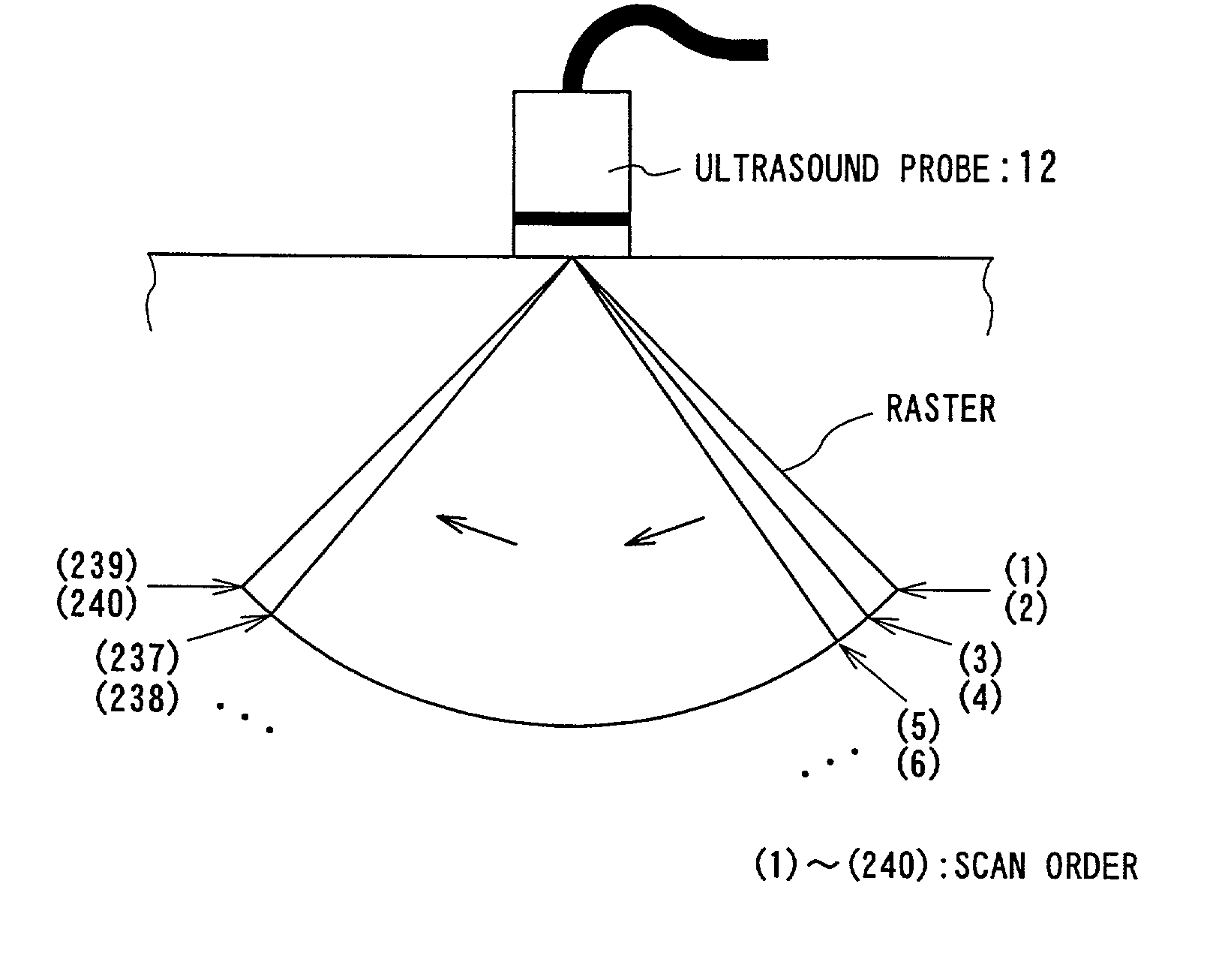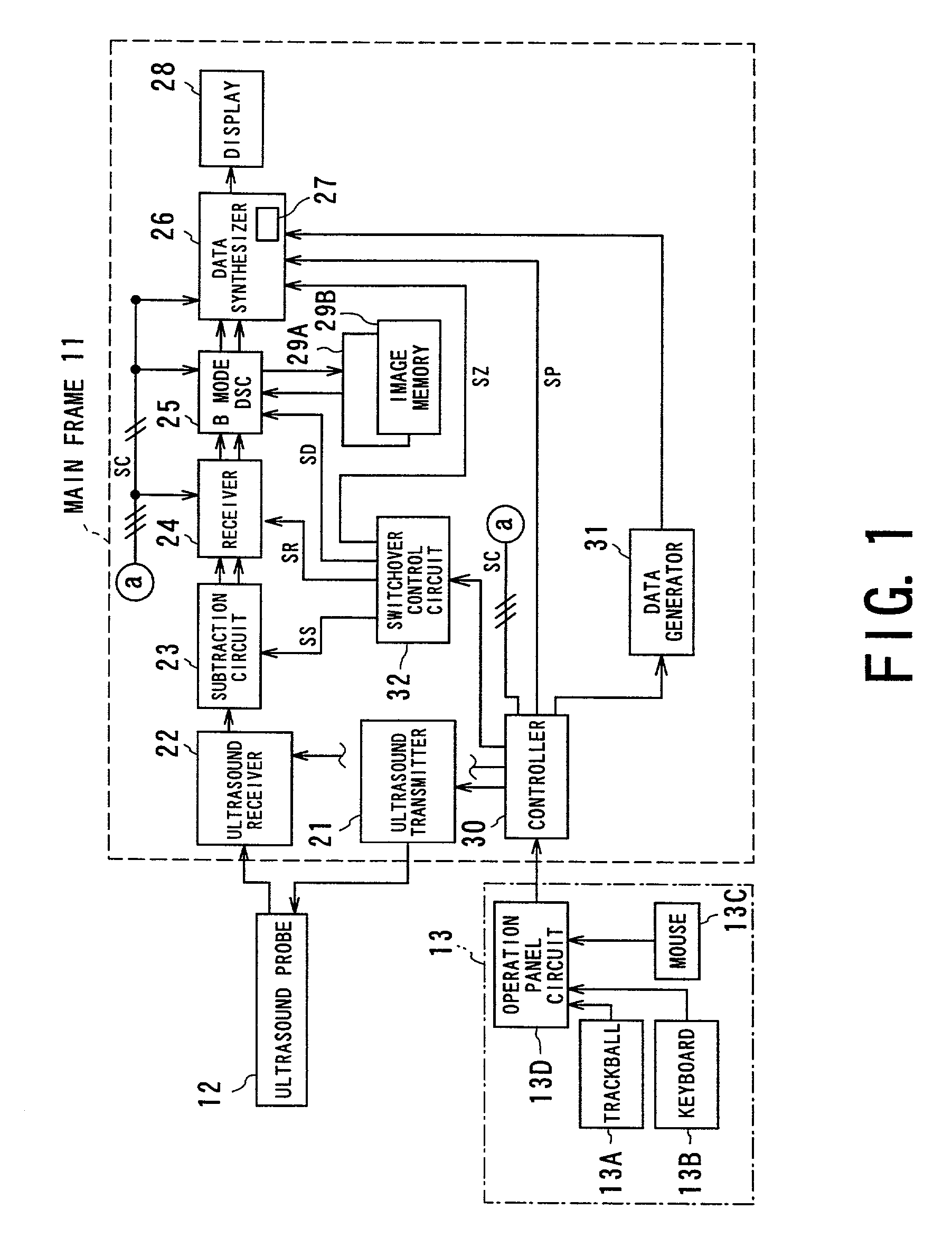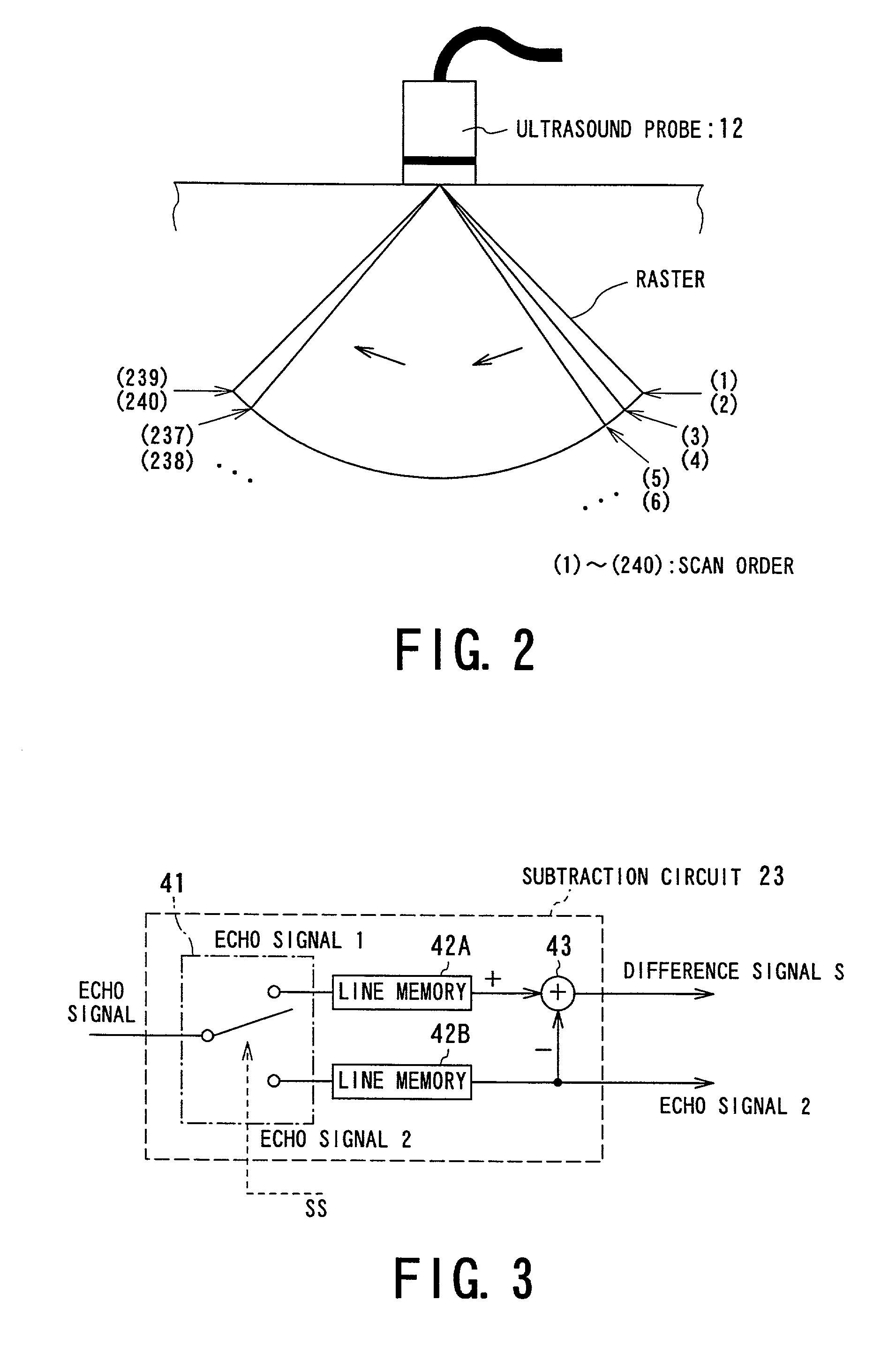Diagnostic ultrasound imaging based on rate subtraction imaging (RSI)
a technology of ultrasound imaging and rate subtraction, applied in the field of diagnostic ultrasound imaging, can solve the problems of affecting the blood flow speed, raising the problem of invasiveness, and the collapse phenomenon of contrast agents cannot be fundamentally avoided
- Summary
- Abstract
- Description
- Claims
- Application Information
AI Technical Summary
Benefits of technology
Problems solved by technology
Method used
Image
Examples
first embodiment
[0068] Referring to FIGS. 1 to 11, a first embodiment of the present invention will now be described.
[0069] A diagnostic ultrasound apparatus according to the present invention can be applied to diagnosis of all regions of interest whose blood flow states can be observed based on contrasted degrees deriving from an injected ultrasound contrast agent into an object. The present embodiment, however, deals with a diagnostic ultrasound apparatus that has the function of identifying abnormal regions by acquiring data indicative of kinetics of blood flow on the basis of contrasted degrees of a contrast agent inflowing into the liver parenchyma or cardiac muscle (i.e. perfusion).
[0070] FIG. 1 schematically shows the entire configuration of a diagnostic ultrasound apparatus according to a first embodiment. The diagnostic ultrasound apparatus has a main unit 11, ultrasound probe 12 coupled with the main unit 11, and operation panel 13.
[0071] The operation panel 13 comprises a keyboard 13A, t...
second embodiment
[0156] Referring to FIG. 13, a diagnostic ultrasound apparatus according to the second embodiment will now be described.
[0157] The present diagnostic ultrasound apparatus functions in the similar ways to that in the first embodiment, but differs from it in that the subtraction circuit 23 is configured as shown in FIG. 13. The remaining configurations are identical to those in the first embodiment.
[0158] As shown in FIG. 13, the subtraction circuit 23 is provided with the electric switch 41, the line memories 42A and 42B, the subtracter, and an adder 44. Compared to the configuration of FIG. 3, the adder 44 is newly installed. The adder 44 mutually adds signals read from the line memories 42A and 42B so as to produce an added signal A ="echo signal 1"+"echo signal 2." The produced signal A is outputted instead of the foregoing echo signal 2.
[0159] In other words, each of the difference signal S and added signal A is sent from the subtraction circuit 23 to its succeeding elements, in ...
third embodiment
[0162] Referring to FIG. 14A, a diagnostic ultrasound apparatus according to a third embodiment of the present invention will now be explained.
[0163] The diagnostic ultrasound apparatus is characterized by the number of scan times (the number of transmission and reception times) per one raster. That is, though the number of scan times is set to two times in the foregoing embodiments, it can be set to three or more times.
[0164] FIG. 14A shows one example, in which the number of scan times is assigned to three. When referring to this example, of all rasters of 100 pieces, the scan orders (1), (2) and (3) are assigned to the first raster, the scan orders (4), (5) and (6) are assigned to the adjacent raster, and so on. To the final raster, the scan orders (298), (299) and (300) are assigned. For each raster, a difference signal S is calculated from two signals depending on the first and third scans. The foregoing echo signal, which is paired with this difference signal S, is assigned to...
PUM
 Login to View More
Login to View More Abstract
Description
Claims
Application Information
 Login to View More
Login to View More - R&D
- Intellectual Property
- Life Sciences
- Materials
- Tech Scout
- Unparalleled Data Quality
- Higher Quality Content
- 60% Fewer Hallucinations
Browse by: Latest US Patents, China's latest patents, Technical Efficacy Thesaurus, Application Domain, Technology Topic, Popular Technical Reports.
© 2025 PatSnap. All rights reserved.Legal|Privacy policy|Modern Slavery Act Transparency Statement|Sitemap|About US| Contact US: help@patsnap.com



